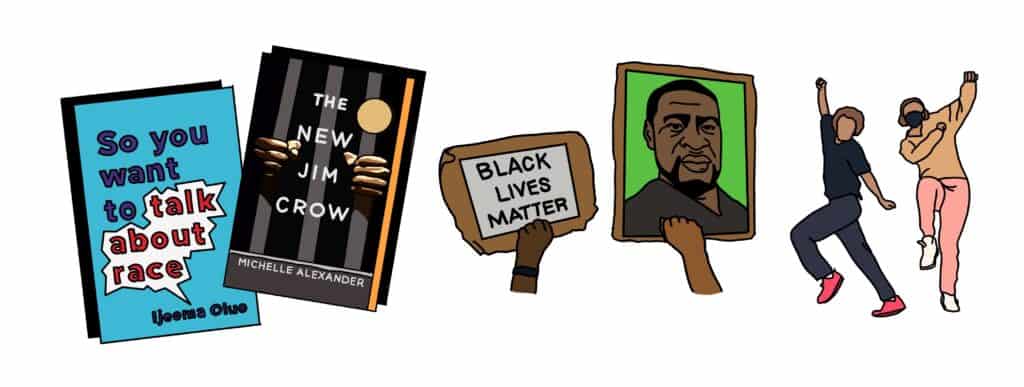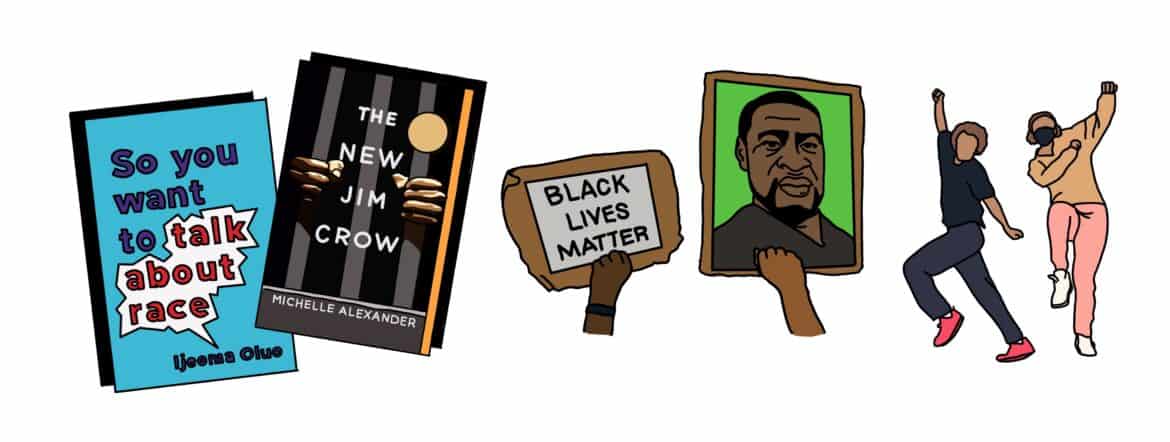
According to the research group Mapping Police Violence, since the murder of George Floyd by Derek Chauvin, 181 Black Americans have been killed by the police. This violence has led to public outrage and protest across the country. High school students have been among those participating in protests, as well as educating themselves on racial issues, and contacting political leaders. According to YPulse, a youth research organization, 55% of U.S. teenagers have been in some way involved with the Black Lives Matter movement.
Young people are making their voices ring loud and clear in the arena of politics and social justice reform. Many students, who might have been previously unaware or less involved with activism, have taken action against injustice this past year. A look at several Roosevelt students’ political activism tells the same story.
Roosevelt sophomore and student activist Lilja Purs participated in several in-person protests and maintains a strong presence on social media, often sharing her viewpoint on current social justice issues. Last summer, she says that in addition to having conversations on social media, she also put effort into educating herself on racial issues through regularly reading articles and watching the news, a level of engagement that was new to her.
Although Purs says that she “was always very aware that racism still exists in America,” police actions last year came as a shock. “I wasn’t aware that [racism] existed to the level that it did in the instance of George Floyd’s death.”
The same movements that changed minds and pressured lawmakers last summer similarly disrupted social media and gave activism an online stage. Purs says that before last summer, “you would see the occasional infographic [on Instagram]…but afterward, you would see people posting about not just racial issues, just everything.” In recent years, social media has also been a space for organizing and spreading the word about protests.
Growth in activism has taken many forms over the past year. Besides the most prevalent forms of activism, students are also finding non-traditional forms of activism.
Roosevelt junior and student activist Myles Mawa fuses original choreography with Black empowerment. On the intersection between political activism and dance, Mawa says, “I like specifically looking to perform at events that are promoting Black artists or speaking up for Black lives in the movement.”
He also sees dance as a way to channel strong messages and emotions. Mawa says, “I will make pieces that I feel more empowered because of the message…talking about, being rooted in your skin, your hair, your voice.”
After George Floyd’s murder, Mawa says that his level of activism “completely shifted” to a much higher level of engagement with his peers and his own education about racism.
Roosevelt junior and student activist Mia Rush says the protests she attended for George Floyd were the first times she had been at the front lines of a protest that took a violent turn. For her, “It was the first time I had heard smoke grenades go off and tear gas.”
Reflecting on the resurgence of the BLM movement, Purs says that the movement will remain strong because “obviously, injustices make people angry and we want to see change…and after a fire starts, it can be hard to put it out when it grows so quickly, which it has.”
While the BLM movement has gained an established base since its founding in 2013, Purs felt that the wave of resurgence among youth following the deaths of George Floyd, Breonna Taylor, and other people killed by the police, has solidified the movement in youth culture.
Reflecting on the months of protests and her thoughts on the future of youth political activism, Rush says, “I hope that we still are pushing for change. And I think with every generation, it becomes more prominent. So I look forward to that. And I look forward to seeing white folks who will not only talk the talk, but walk the walk.”
